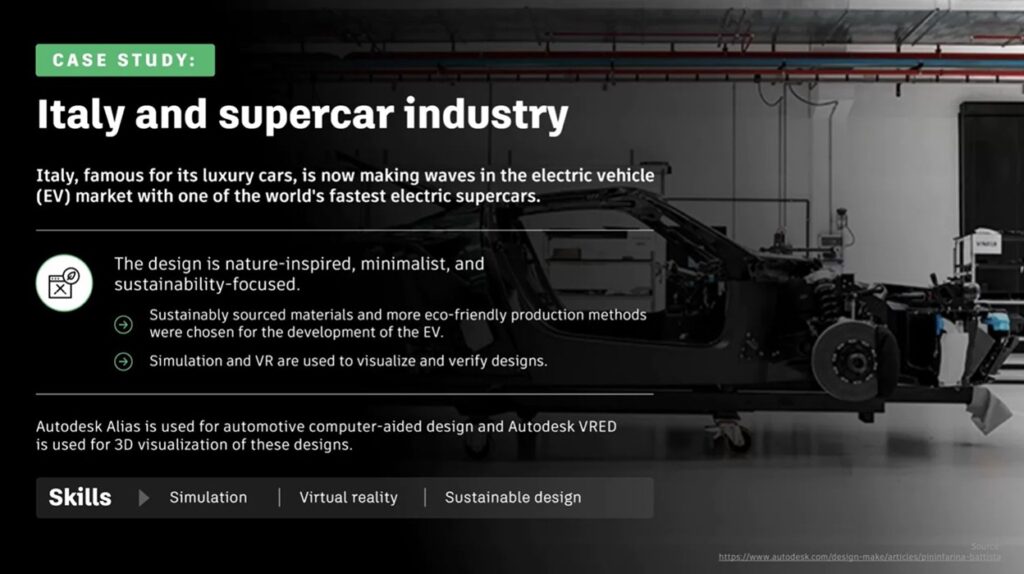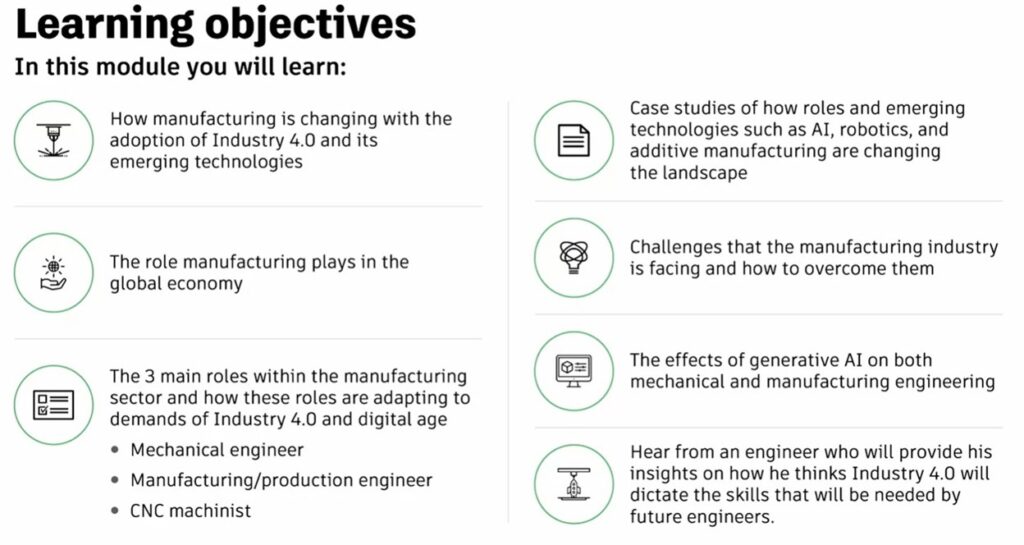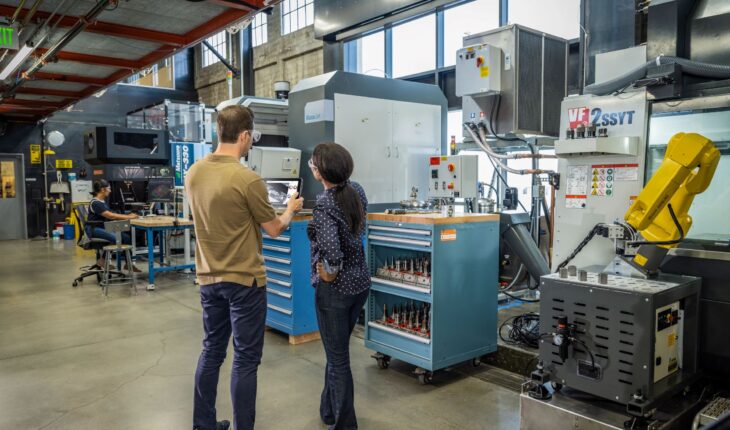Six free courses benefit educators, engineering students and engineers.
Educators and engineering firms looking for training on Industry 4.0 have a new resource: a six course curriculum for smart manufacturing created by the American Society of Mechanical Engineers (ASME) and Autodesk, Inc. The two organizations collaborated through 2023 and 2024 to compile interviews, analyze data and come up with real-world examples for the set of six free online courses. The lessons cover evolving engineering skills, including Artificial Intelligence (AI) and robotics, design for sustainability, Industry 4.0, data skills and business and digital literacy.
“We began this effort based on feedback from educators. Industry 4.0 is here and companies are struggling because they’re not workforce ready. Much of the knowledge being taught in the classroom is not geared to digital strategies,” says Pooja Thakkar Singh, program manager for the American Society of Mechanical Engineers. The courses are meant for mechanical engineers, manufacturing engineers and Computer Numerical Control (CNC) machinists. The sixth course contains examples of R&D work that show how to apply acquired knowledge to projects using Autodesk’s Fusion software. The overall goal of the curriculum is to empower educators and equip students and professionals with in-demand skills that will advance their careers and support modern manufacturing.
“The courses run between 30 and 45 minutes, with the underlay of the Fusion exercises being a little bit deeper. The software is very easy to use. This is advanced manufacturing,” says Debra Pothier, senior manager for Autodesk for strategy for architecture, engineering, construction and operations (AECO) and a partnership owner for ASME.
For example, the design for sustainability course covers how value chains and supply chains impact the environment and product lifecycles influence design solutions. It also explores the importance of the “Triple Bottom Line,” a framework that measures social, environmental and financial benefit.

“There were requests to make the courses as customizable as possible due to the changing landscape of Industry 4.0. We accomplished this by integrating PowerPoint slide decks and videos that faculty and instructors can switch out to keep up with the latest information,” says Singh.
Another way to customize the courses is to use Doodly, an animation software. The program can create dynamic virtual board drawings for videos.
“Then you can remake the courses by re-recording and re-downloading content as many times as you need,” says Singh.
Critical ingredients for the courses
One of the key components of the courses is explanations of digital manufacturing skills that apply to mechanical engineering, manufacturing engineering and CNC machining, like CAM 2.5, 3-axis milling and simulation.
“Doing this impactfully involved getting all the stakeholders together in one virtual classroom. We had to ask ourselves what students were looking for and what they were passionate about. We also had to cover the challenges that industry experts were facing. We didn’t know those until we heard that from the sources,” says Singh.
Another key component is a simultaneous focus on hard skills, such as data analysis, and soft skills, like collaboration.
“We demonstrate how Fusion software facilitates the communication of generative design AI outputs, bridging the gap between technical skill and practical application,” says Curt Chan, strategic partnerships manager for Autodesk.
A third key component is explanations of the enormous impact of AI and how this tool affects the design process. In some situations, generative AI software can handle 90 percent of the programming required for machine part development. A mechanical engineer can then utilize their expertise to finetune the last 10 percent.
AI is like “a whole new toolbelt in a number of ways,” says Jason Love, technology communications manager for Autodesk.
Before AI was widely used, a mechanical engineer designing an assembly might be required to learn how to draw a diagram of the parts in an assembly.
“Now there are tools in place that with the click of a mouse, create those 2D diagrams from your 3D models. It falls to the human engineer to double check the accuracy of those drawings,” says Love.
Some educators may be unfamiliar with such changes or the new workflow itself. The courses address these problems by ensuring viewers grasp how many options AI creates.
“Faculty are going to have to teach the entire process, not their little silo,” says Pothier.

How and why the curriculum works
The six courses are not critically tied to one another. This gives an educator flexibility to “plug and play.” A manager could assign a course when an employee has downtime or an educator wants to offer extra credit.
“Through conversations with educators, I’ve observed many different ways they are planning and implementing the curriculum,” says Chan.
The models have a loose sequential order. For example, the course that serves as an introduction defines the term “Industry 4.0.” It also explains the driving forces behind production processes and relates the remaining challenges from Industry 3.0. A later course on digital literacy and data skills provides participants with an understanding of Industry 4.0 technologies and data measurements. This course also gives participants an understanding of the role of big data and how numerical insights drive manufacturing processes.
Each course has a self-assessment that learners can complete to earn a certificate. Participants can earn credit or mark their skills as upgraded after completing certain courses or the entire set.
One factor contributing to the popularity of the courses is the shift during the past five years to the use of online education, for both synchronous and asynchronous learning. This is partly due to the influence of the COVID-19 pandemic. Students and engineers have also become more well versed and more highly motivated to utilize knowledge they have drawn from online content.
ASME and Autodesk’s history of partnership
The Industry 4.0 curriculum is the latest result of ASME’s and Autodesk’s history of teamwork. The two entities have been working together since 2021. That year, Autodesk Foundation, Autodesk’s philanthropic arm, began donating funds to ASME’s Engineering for Change (E4C) research fellowship program.
As of late February 2025, the Autodesk Foundation has funded over 100 E4C fellowships to support nonprofits and startups in a range of fields. These include energy and materials development, health and resilience systems and work and prosperity opportunities. The donations to E4C have also expanded the reach and impact of Autodesk Foundation’s Impact internship program. That program connects individuals in the Autodesk Foundation portfolio with new engineers.
In 2022, ASME and Autodesk released the results of a collaborative multiphase research project on the future of manufacturing. The effort involved a research study conducted between August 2021 through May 2022. The report on the study investigated and identified the future workflows and skills required for mechanical engineering, manufacturing engineering and CNC machinist roles.
“This was the project that was the basis for the six-course curriculum. The second phase of the project was the curriculum design and creation. We piloted the first four courses by launching a competition relating to sustainability and ocean clean-up,” says Singh.
The Autodesk-hosted event featured university teams designing an autonomous robot to clean up trash from the ocean. Students relied on skills they had learned from the courses.
One of the teams in the competition, Wissen Marinos, was formed of students from India’s National Institute of Technology Silchar. Wissen Marinos team captain Pratisruti Buragohain says participating in the competition enabled team members to develop problem-solving abilities, technical skills and soft skills.
“Despite facing various hurdles along the way, we tackled each one of them strategically and with a meticulous determination. In essence, our experience throughout the competition bestowed upon invaluable lessons, equipping us with enhanced design proficiency, research skills and efficient problem-solving strategies,” says Buragohain.
Additional steps for the curriculum have included the translation and localization of the courses into Japanese and German. ASME and Autodesk are tracking how widely the curriculum is used and asking what information students and engineers are learning from it.
“Any curriculum takes time. It’s going to take time to drive it the use of this curriculum. That’s about keeping a pulse on the industry, hearing what they have to say and what Autodesk’s customers have to say,” says Chan.
Pothier says Autodesk is striving to close the skills gap and be a trusted partner to engineering firms.
“We give the underpinning of, “This is how you do it with Fusion and we’re giving you modular pieces.” We’re giving it to universities and firms in a way that students really want to consume it. Our team is very passionate because we feel if you’re going to be sending your kids to school, they need those skills today,” says Pothier.
View the courses at: https://www.autodesk.com/learn/ondemand/collection/asme-manufacturing-education-courses.





